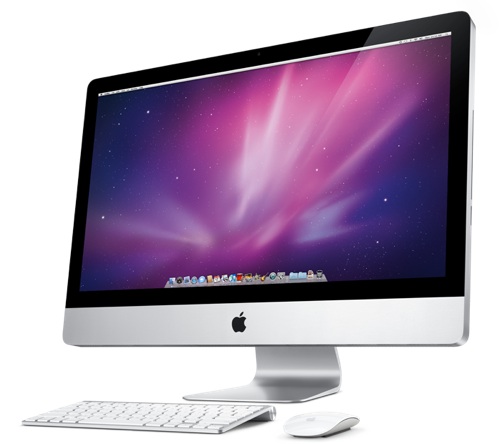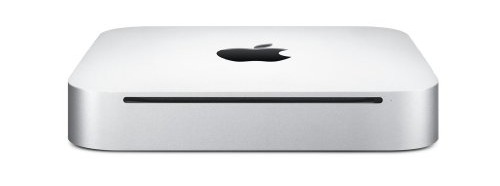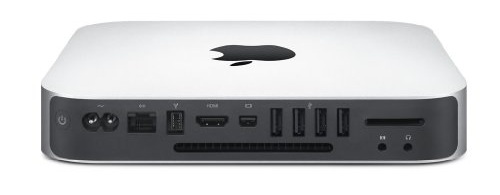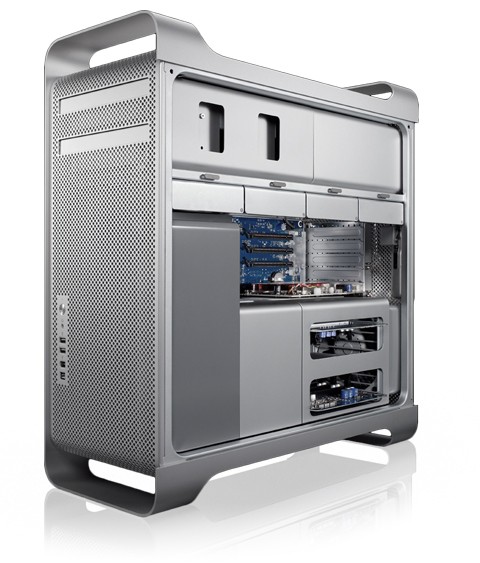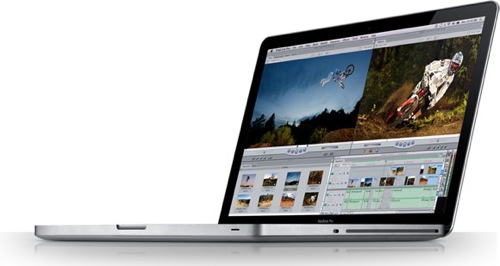Artist's guide to buying the right Mac computer
Update: There's a newer version of this guide
This guide is written for artists/designers who have already decided to get an Apple computer, aka a Mac, but don't quite know which model is suitable. I'll provide you with tips on choosing and my recommendation.
A little background on myself first. I'm an artist working for a newspaper. In the office, we use PCs running on Windows, but before that it was actually Apple computers, the G5. At home, I'm using a Mac Pro (quad core 3ghz) bought in 2006. I've used/owned the Mac Mini, iMac, Macbook and the Macbook Pro before. I've not tried the Macbook Air though.
I'm not going to dive into the whole "Mac vs PC" since that's worthy of a writeup by itself.
You will not see me comparing speeds of these computers with benchmarks. Reason is because they are all really fast, capable of handling whatever typical drawing application you're going to use. I've an iMac Duo Core 1.83ghz and it still runs along fine today.
Desktop or laptop?
Do you need to use your computer at different places? In the office, school and home.
The only difference, between desktops and laptops, is portability.
The answer might not be clear but you should take a hint from your working habits. For students, laptops is preferred if you use computers (not necessary yours) in school. For designers who meet clients and present their work often, laptops are convenient. If you don't have space to put up all the wires, eh, but that's not really a portability issue.
Various desktop options
iMac
The iMac is Apple's all-in-one computer. This should be the first choice to consider because it's powerful and aesthetically well designed. All models come with wireless keyboard and the Magic Mouse. It's a very minimalist design with only one cable for the power supply. It's great if you want a clutter-free desk.
Currently, the iMac comes in two sizes, the 21.5-inch and the 27-inch. They are wide screen so you can put your drawing palettes by the side and still have plenty space for the drawing canvas.
The hard drive is at least 500 GB and it runs at 7200 RPM, the usual speed for desktop computers.
All models come with at least 4 GB of RAM, which is one of the most important computer components for artists. 4GB is great for running several applications and working on multiple large artwork without lag.
As for the graphics card, it's decent enough for gaming, 3D work as well as some light video editing work. If you're working mainly on 2D work like digital painting, it's more than sufficient.
The iMac, in my opinion, provides the most value for money.
Check out Amazon.com for more details on specifications and customers reviews on the iMac.
Mac Mini
The Mac Mini the smallest computer offered by Apple, measuring 7.7 x 7.7 x 1.4 inches. The volume is slightly larger than two stacked DVD cases.
With it's small size, it can only pack a 5400 RPM hard drive. It means opening and saving large files will take noticeably longer. More noticeable if you need to open and save files frequently, which you will.
It comes with only 2 GB of ram. Sufficient but might not be optimal if you want to work with several large files. Additional RAM comes at a price, of course, but it's user installable.
The graphics card is decent but less powerful than the iMac's. It's recommended to keep to 2D work on this machine.
The Mac Mini does not come with a keyboard, mouse and display. That means you have to fork out additional dollars for them. If you don't already have a display, you should consider the iMac. Even if you have a display, you should consider selling that display if you're not using it for anything else (e.g. gaming), and go for the iMac. I say that because if you buy everything to go with the Mac Mini, it adds up to almost the price of an iMac.
This is the back of the Mac Mini. It has lots of ports as with all other Macs. Note that it comes with a Mini DisplayPort and HDMI port. If your monitor doesn't have a Mini DisplayPort or HDMI port, you've to fork out additional dollars for a convertor.
I would only recommend the Mac Mini if you have no intention of ditching your current monitor.
Check out Amazon.com for more details on specifications and customers reviews on the Mac Mini.
Mac Pro
Mac Pro is the workstation grade of computers. It's actually server grade -- server meaning those things that run website on the Internet 24/7. Think reliability.
The only reason why you would want to get a Mac Pro is because of its potential for upgrade, specifically, the potential to upgrade the graphics card. The graphics card here is better than the iMac, but the iMac's is no pushover.
It can take up to 16 GB of RAM but you really need to open ridiculously big graphic files to appreciate that. There are four hard drive slots but with external hard drives you can have unlimited "slots".
It comes with a keyboard and mouse but no display, but it's priced like it comes with a display.
For the most part, it's going to be a overkill. I've a Mac Pro since 2006, and it's still an overkill today and possibly for a few more years, since software requirements aren't as demanding compared to what hardware can offer nowadays.
I won't recommend the Mac Pro for artists unless you need to upgrade the graphics card in the future (possibly for gaming) or you don't want to ditch your monitor. Save that extra money and you can even buy another iMac.
Check out Amazon.com for more details on specifications and customers reviews on the Mac Pro.
Macbook and Macbook Pro
The essential difference between the Macbook and the MacBook Pro is the graphics card and the screensize.
Macbooks have weaker graphics card and smaller but more portable 13-inch size. 13-inch I feel is a bit too small for creating graphics. Sure you can get a display connector and extend it with another monitor but you have to buy another monitor.
The 15-inch display of the Macbook Pro is a nice size. The graphics card is decent too should you want to do some 3D rendering.
Check out Amazon.com for more details on specifications and customers reviews on the MacBook Pro.
Other things you should buy with your Mac
Applecare
All Macs come with a standard 1-year Applecare warranty. An additional 2-year Applecare plan is available for purchase.
It's highly advisable to extend the Applecare protection to its maximum of three years. Repairs can be quite expensive. I once paid us$600 to change the logic board of my out-of-warranty Mac Pro. It's even more expensive if it's a part replacement for the laptops.
This is well worth the money, usually at less than $0.50 per day for that extra two years.
External harddisk
External harddisks today are quite affordable and come in sizes going up to 2 TB -- I'm talking about the Western Digital WD Elements 2 TB external hard drive.
Hard drives is the best solution for backing up your files, and with today's prices, one of the best valued as well. DVDs storage can go bad as years go by -- some of mine did. Sure hard drives can fail sometimes (rarely), then go for another 2 TB if your work is worth much more.
The disappointing thing is the WD Elements mentioned above only has a 1 year warranty. If you don't mind fixing yourself an enclosure with an internal hard drive, you can get up to 5 years warranty on the drive.
RAM
Like I said, 4 GB RAM is comfortable for getting most of the tasks done. If you want more, try to buy it not from Apple as they charge a premium for their nothing-different RAM.
Conclusion
I recommend the iMac strongly because of the good performance over price. Be sure to extend your Applecare for an additional 2 years.


